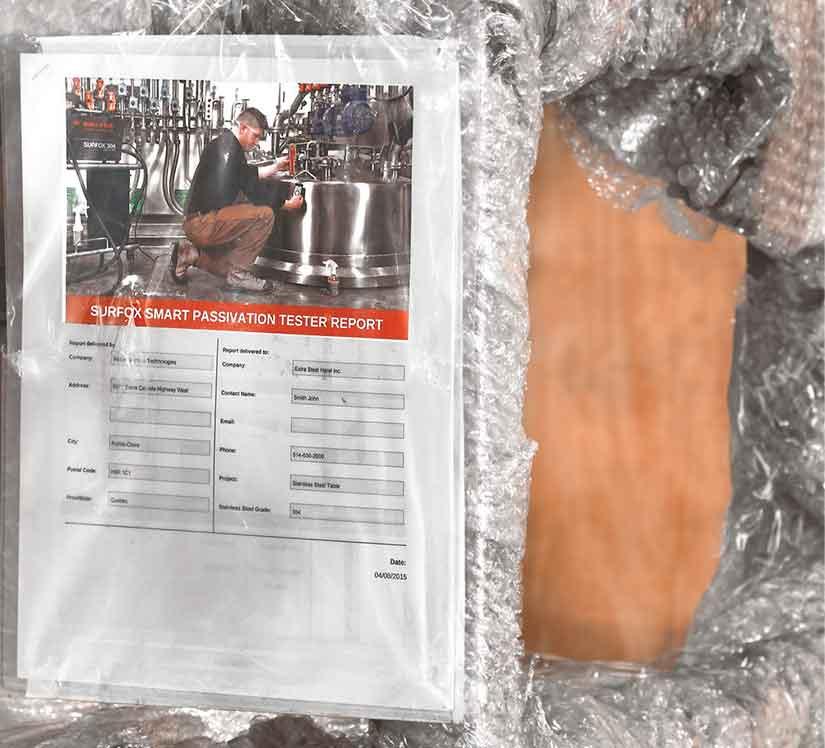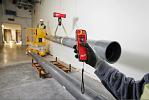- FMA
- The Fabricator
- FABTECH
- Canadian Metalworking
Use IoT technology to Test, Document, and Communicate Stainless Steel Passivation
Prove that your stainless steel components are stainless before they ship
- By Sue Roberts
- June 23, 2016
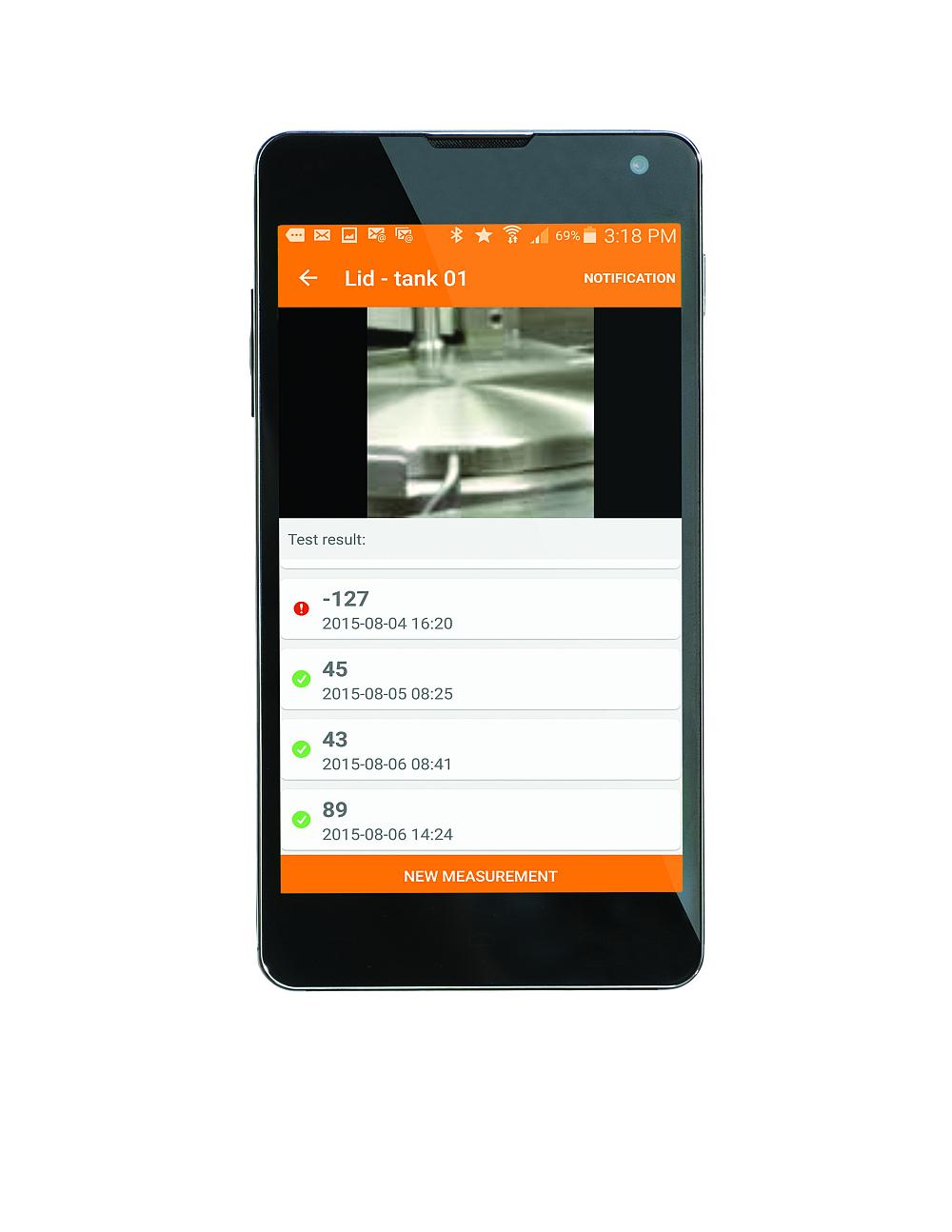
Multiple measurement results, shown on a smartphone, can report passivity progress on a stainless steel item. A photo accompanying the data shows where the test was conducted.
Editor’s Note: This article is adapted from, The Internet of Things Hits the Shop Floor: Metalworking in the Age of Connectivity, a white paper from Walter Surface Technologies. It is available for download at www.walter.com/en_CA/download-white-paper-form .
Stainless steel doesn’t rust. In theory. But most manufacturers working with stainless understand--or have learned--that to maintain the rust-free status, the chromium-oxide coating must be formed and kept intact. Manufacturers also understand--or have learned--that production processes, an acidic cleaning solution, or something as simple as iron dust from a neighboring operation can inhibit the development of the rust-preventing passive layer.
“People don’t know much about stainless steel,” said Jonathan Douville, product manager, Surfox and finishing abrasives, at Walter Surface Technologies. “They know it shouldn’t rust, but they don’t always know that it can rust easily; that they have to be careful how the material is treated. For example, when you weld you destroy the passive layer or when you use acid cleaners without properly neutralizing the surface you inhibit the formation of the protective coating.
“The good thing is that the passive layer will rebuild itself if you do the cleaning process well with the right cleaner. So there is always a way to bring it back. And many people are not aware that the material’s passivity can be measured or verified at any time during the chemical reaction.”
Passivation Is a QC Issue
Proving that a stainless steel component will remain stainless has become a quality control issue. An increasing number of customers using stainless components are asking for a passivity guarantee. Measuring, verifying, and obtaining documentation that a surface has the invisible protective coating can be difficult, time-consuming, and expensive.
A section of stainless steel that has undergone the same processes as the component to be verified can be sent to an independent lab where a destructive test is performed. An assumption is made that the data resulting from the test on the sample also applies to the part or component going to the customer. Receiving the test results can take hours, even days, and can delay shipping if corrective actions are needed.
Methods of collecting, comparing, and documenting manufacturing data, however, are rapidly changing. Applications developed for the Internet of Things (IoT) have made it possible for computer programs to share real- time monitoring of production processes, including machine tool performance, tool wear, and raw material supplies, on a personal electronic device from virtually any location. Machines are talking wirelessly amongst themselves responding to commands, and monitoring and reporting their own productivity.
“The concept of leveraging technology, cloud-based platforms, and mobile apps to support production in the metalworking industry is still emerging,” said Douville. “It is a way for machine shops and fabricators to differentiate themselves, and be more efficient and competitive in today’s market.”
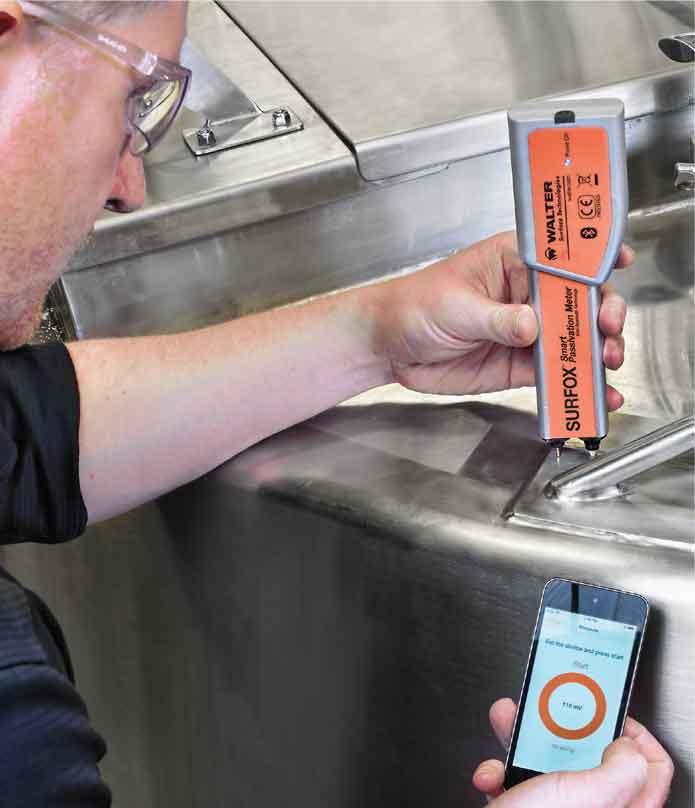
The wireless tester, a smartphone, and the IoT combine to provide stainless steel passivity testing at any location.
Test, Document, and Report
That thinking led to the development of a wireless, Bluetooth®-enabled, hand-held device for passivation testing. A smartphone or tablet, a connection to the IoT, and a Surfox™ Smart Passivation Tester combine to conduct passivity tests on stainless steel in any location, then download the results to a PDF report that can be electronically shared.
Douville explained, “You get a measurement of the passive layer on an area of the actual workpiece in a few seconds. If the reading is above zero, you have a passivation layer. If it is below zero, you have to wait before the piece is corrosion-free. If the measurement says the workpiece is not passive you can program the tester to remind you to take another measurement in four or eight hours. Results can be added to documentation reports that are immediately available for sharing.”
Without the IoT connection, the passivity measurements are still valuable, but there are limits to how they can be used. There may be a wait while they become part of a hand-written or keyed-in report. Then, depending on procedures, results may not immediately be available for sharing with other departments or the customer.
Working through the IoT, the data and any resulting actions can be instantly added to customer-specific reports that are ready for electronic distribution. “Going to the IoT adds value,” Douville said. “The data is immediately accessible within the customer’s report via a secure cloud. Each report can be modified according to the customer’s specific needs or requests.”
Eliminate Quality Questions
Learning the status of passivation while the component is still in-process, Douville added, also eliminates questions about why a delivered stainless steel item did not remain rust-free.
“Some customers would experience corrosion on their parts and not know if it was caused by a problem with the original manufacturing process, during transport, or if a cleaning process damaged the chromium-oxide layer after it arrived at the customer’s location. The part manufacturer may have had to go to the customer’s location to try to learn why there was a problem and to perform additional work.
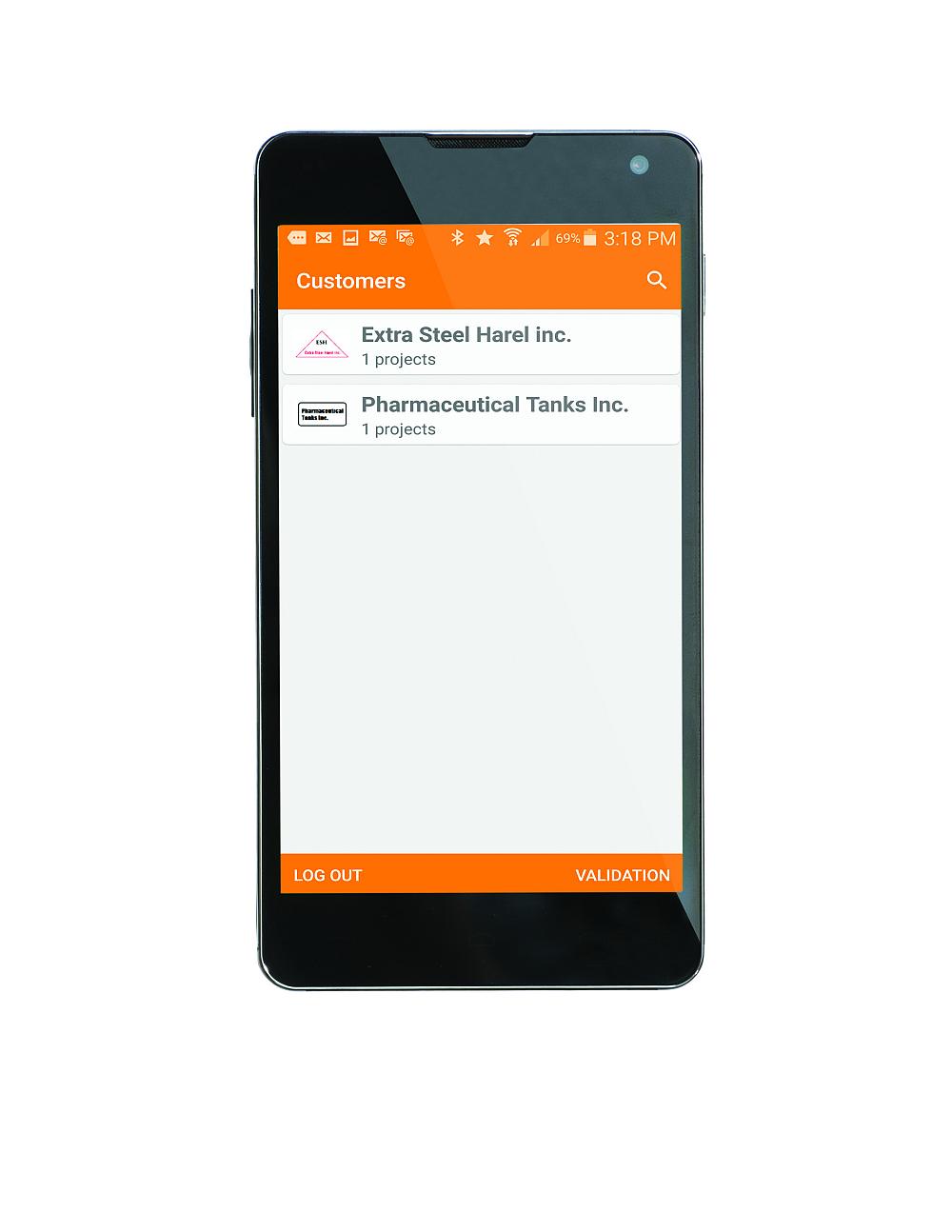
Passivity data is immediately uploaded to a custom-designed report that can be instantly shared with other departments or the customer.
“By recording the data on the part while it is still in-house, the manufacturer can prove that their process was under control and the passivation layer was intact prior to shipping.
“If the manufacturer finds a problem--that the layer is not there--it can investigate why and correct the problem before shipping. It’s a quality control tool that manufacturers didn’t have in the past.”
Use IoT Technology
Measuring the passivity of stainless steel is gaining importance in every industry application where the material is used. It also plays a large part in maintenance, repair, and operations (MRO).
“In MRO, customers want to be sure that the repairs don’t change the state of the passive layer,” said Douville. “For example, welding can destroy the passivity of the metal around the weld. The good thing is that with proper cleaning, the passivity can return. But again, this needs to be measured and reported. And those measurements can be done in the field.”
Industry members are still learning about passivation and the importance of verifying its existence, but the number of companies--particularly large companies--specifying passivity documentation is rapidly growing,” said Douville. And, he added, the IoT capabilities for testing, documenting, and communicating results are making it easier for any size shop to build the quality step into their stainless steel processes.
“It’s a simple technology to measure passivation, an ability that has been there for ages. What is different now is how we use the data and how we are able to accelerate communications using the IoT technology.”
Photos courtesy of Walter Surface Technologies.
Associate Editor Sue Roberts can be reached at sroberts@canadianmetalworking.com
Walter Surface Technologies, 888-592-5837, www.walter.com
subscribe now


Keep up to date with the latest news, events, and technology for all things metal from our pair of monthly magazines written specifically for Canadian manufacturers!
Start Your Free SubscriptionAbout the Author

Sue Roberts
2135 Point Blvd
Elgin, IL 60123
815-227-8241
Sue Roberts, associate editor, contributes to both Canadian Metalworking and Canadian Fabricating & Welding. A metalworking industry veteran, she has contributed to marketing communications efforts and written B2B articles for the metal forming and fabricating, agriculture, food, financial, and regional tourism industries.
Roberts is a Northern Illinois University journalism graduate.
- Industry Events
ZEISS Quality Innovation Days 2024
- April 15 - 19, 2024
Tube 2024
- April 15 - 19, 2024
- Düsseldorf, Germany
CTMA Economic Uncertainty: Helping You Navigate Windsor Seminar
- April 30, 2024
- Windsor, ON Canada
MME Winnipeg
- April 30, 2024
- Winnipeg, ON Canada
CTMA Economic Uncertainty: Helping You Navigate Kitchener Seminar
- May 2, 2024
- Kitchener, ON Canada













